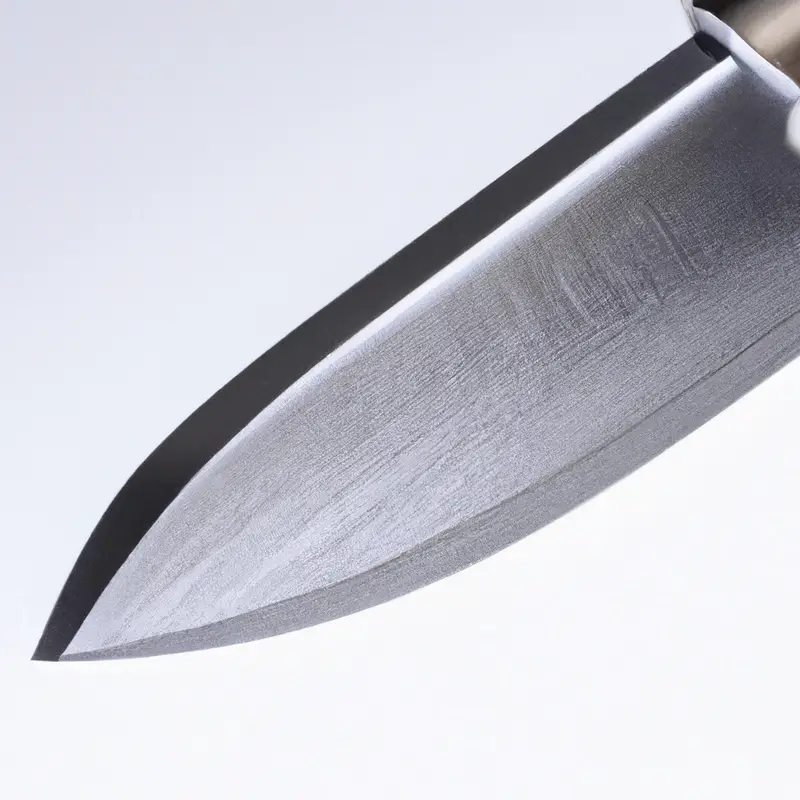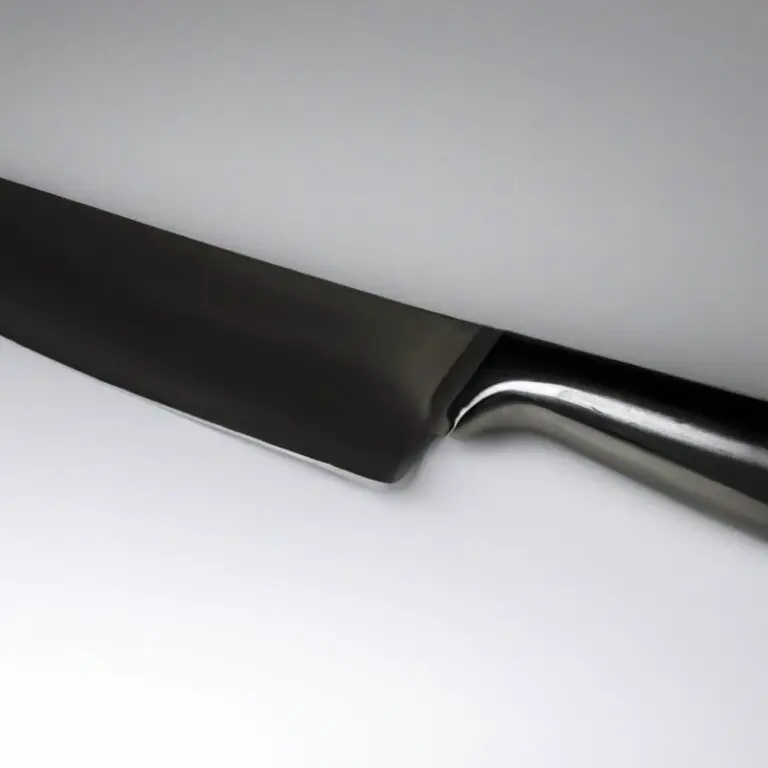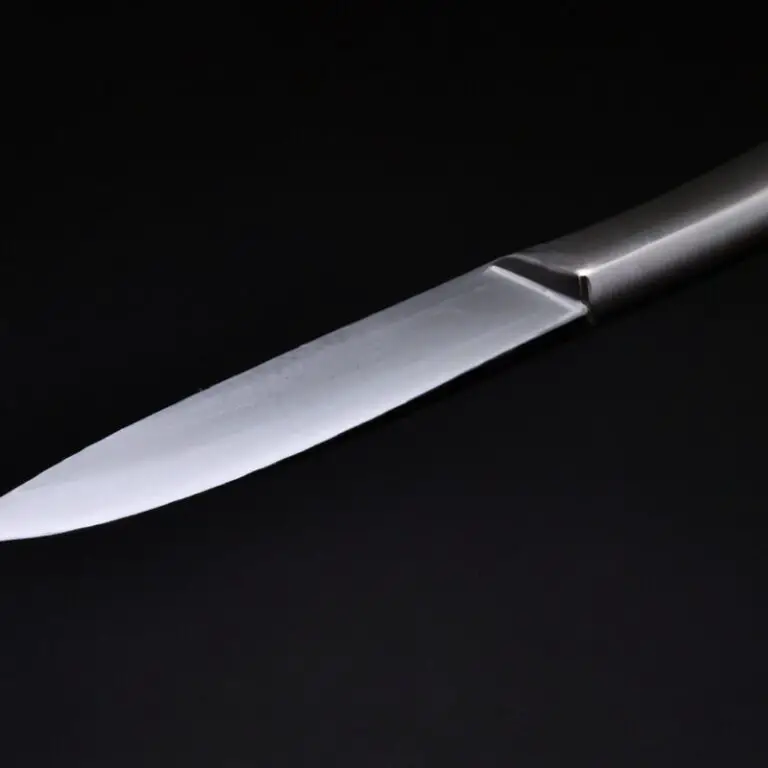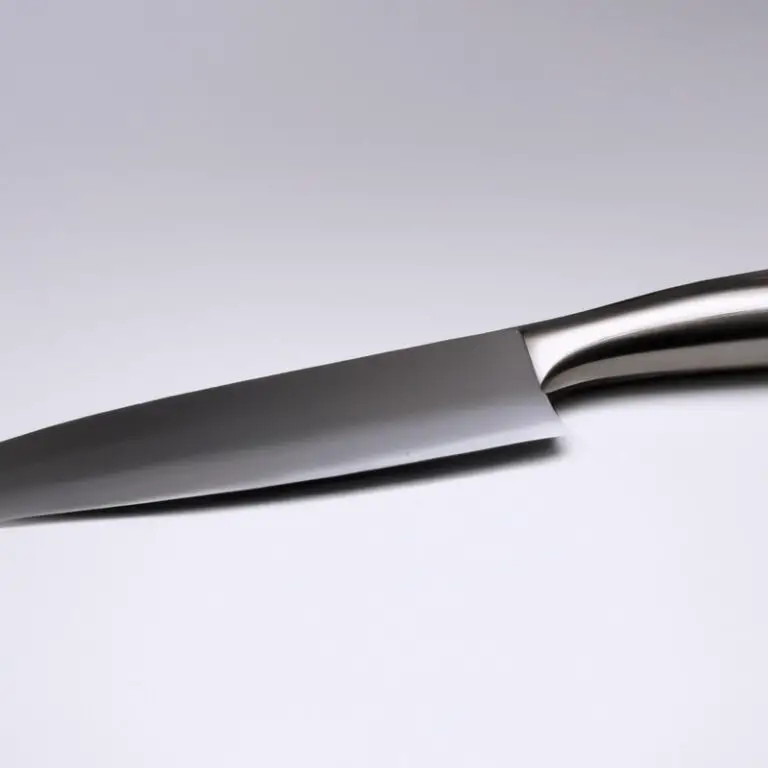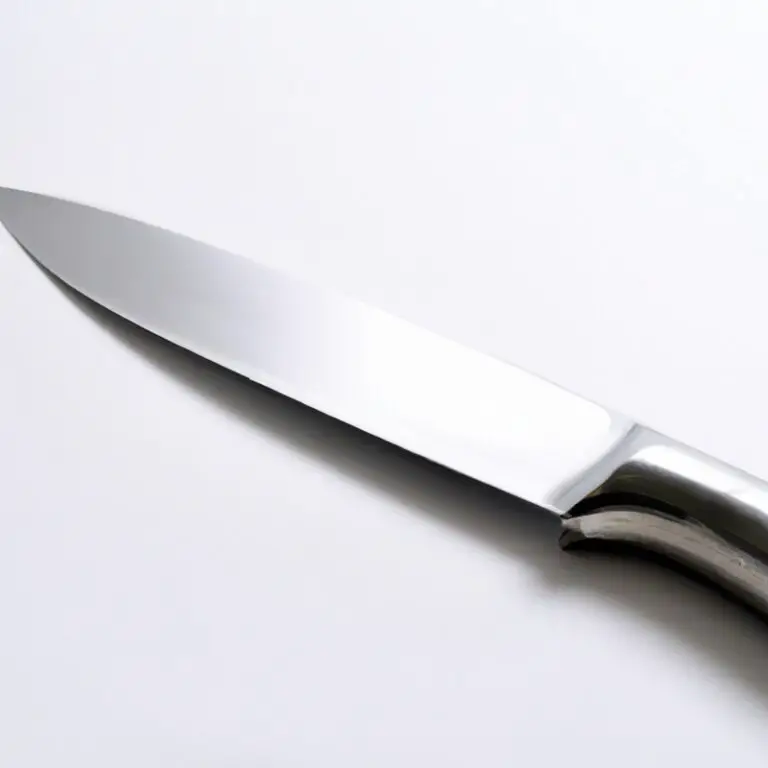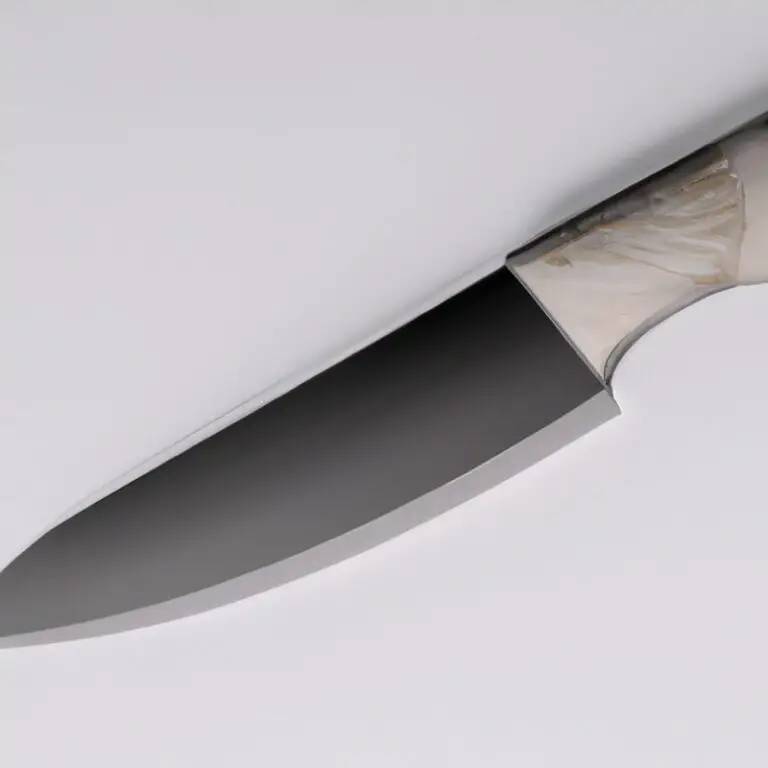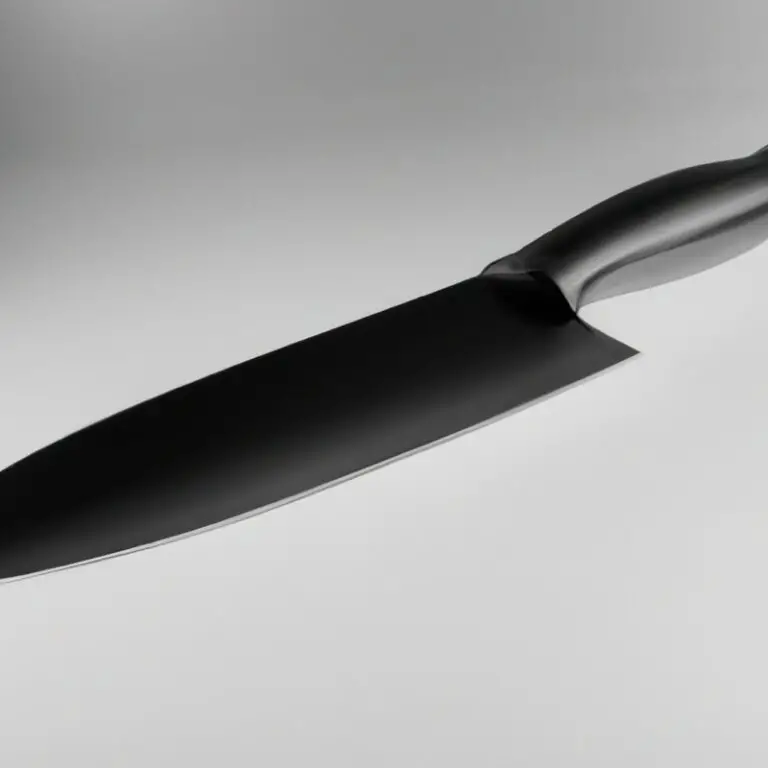How To Maintain The Sharpness Of a Santoku Knife? Easy!
Key Takeaways:
- Regular honing is essential to maintain the sharpness of a Santoku knife.
- Proper storage in a knife sheath or block can prevent dulling or damage to the blade.
- Using a sharpening stone or professional sharpening service can restore the blade’s sharpness.
- Avoid using a Santoku knife on hard surfaces or with excessive force to prevent dulling or chipping.
Imagine effortlessly slicing through your favorite ingredients with precision and finesse. A sharp Santoku knife can make that a reality.
But keeping your blade in top condition requires more than just a quick rinse and a toss in the drawer.
As an expert in home cooking, I know the ins and outs of Santoku knife maintenance. In this article, we’ll explore the anatomy of this incredible blade, discuss the critical importance of sharpness, and provide easy-to-follow tips for honing and sharpening your Santoku knife like a pro.
| Recommendation | Reason | |
| 1 | Use a honing steel before each use | Realignment of blade edge and maintenance of sharpness |
| 2 | Sharpen the blade every six months | Removal of damaged or dull parts of the blade |
| 3 | Clean and dry the knife immediately after use | Prevention of rusting or dullness caused by exposure to moisture |
| 4 | Store the knife in a sheath or knife block | Prevention of damage to the blade and ensuring its sharpness for longer periods of time |
| 5 | Avoid cutting frozen or hard items with the knife | Prevention of damage to the blade’s sharp edge |
The Anatomy of a Santoku knife: Understanding the Blade and its Components
The anatomy of a Santoku knife includes the blade and its components. The blade is typically made of high-carbon stainless steel, which is corrosion-resistant and durable.
The edge of the blade is usually straight, with a gently curved tip.
The spine of the Santoku knife is thick, providing a comfortable grip for the user. The handle is usually made of wood or synthetic material, such as plastic, and is attached to the blade with rivets.
The Granton edge, also known as a hollow-ground edge, consists of fluted scallops on both sides of the blade.
This feature allows for air pockets to form between the food and the blade, reducing friction and improving slicing efficiency. Understanding the components of your Santoku knife is crucial for maintaining its sharpness over time.
Proper handling, cleaning, and honing techniques ensure that your knife is always ready for use.
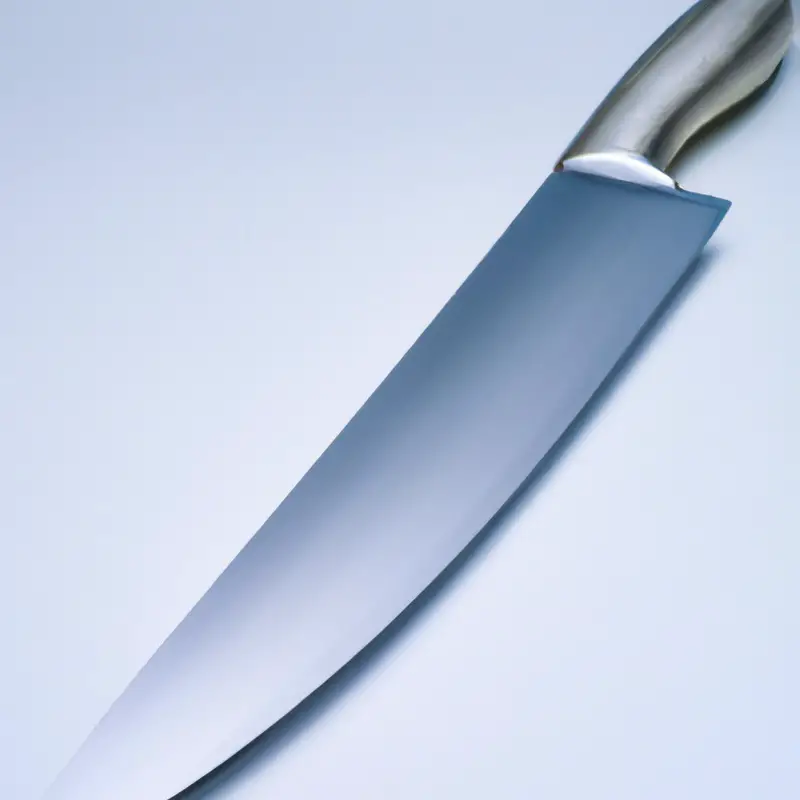
Why Maintaining Knife Sharpness is Critical for Efficient Slicing and Chopping
Maintaining knife sharpness is critical for efficient slicing and chopping because it reduces the effort required and ensures precision when cutting. A dull blade requires more force, causing the knife to slip or squish the food rather than make clean cuts.
This not only affects the appearance of the food but also its taste and texture.
Additionally, a dull blade can be dangerous as it increases the risk of injury due to slips and uneven cuts. Therefore, it is essential to regularly sharpen and maintain the sharpness of your Santoku knife to ensure efficient and safe usage.
How Often Should You Sharpen Your Santoku Knife?
To maintain the sharpness of your Santoku knife, experts recommend sharpening it every 2-3 months with regular use. However, the frequency of sharpening depends on how frequently you use the knife and how well you maintain it.
If the blade becomes dull and inefficient before 2-3 months, it’s time to sharpen it.
Always ensure that you use the right sharpening technique and tools to protect the blade from damage and extend its lifespan.
Manual vs. Electric Sharpeners: The Pros and Cons of Each
Manual sharpeners require physical effort to use, but they provide complete control over the sharpening process. This allows for greater precision and customization to your blade’s needs.
On the other hand, electric sharpeners offer convenience and ease of use.
They require minimal effort and can sharpen your knife quickly and efficiently. However, they may remove more material from the blade and can be less precise than manual sharpeners.
Ultimately, the choice between manual and electric sharpeners depends on your personal preferences and expertise level.
If you prefer complete control and precision, a manual sharpener may be best for you. If convenience and efficiency are your top priorities, an electric sharpener will suit your needs.
Honing vs. Sharpening: What’s The Difference?
Honing and sharpening are two different methods used to maintain the sharpness of a Santoku knife. Honing refers to realigning the blade’s edge using a honing rod.
This process doesn’t remove any metal from the blade but only straightens the microscopic teeth at the edge.
On the other hand, sharpening involves removing metal from the blade to create a new edge using a sharpening stone or an electric sharpener. It’s important to understand the difference between honing and sharpening to determine which method to use depending on the condition of your Santoku knife.
If your knife has lost its sharpness, honing won’t do the trick, and you’ll need to sharpen it.
However, if your knife is still sharp but has become misaligned, honing will help to realign the edge. Using a honing rod to hone your Santoku knife regularly can lengthen the blade’s lifespan as it prevents it from becoming dull and misaligned too quickly.
Sharpening, on the other hand, should only be done when needed, typically once or twice a year, depending on the frequency of use.
It’s best to seek expert guidance in sharpening your Santoku knife, especially if you’re not familiar with the process. A poorly sharpened knife could lead to injuries or cause further damage to the blade.
Essential Do’s and Don’ts for Proper Santoku Knife Maintenance
To ensure that your Santoku knife stays sharp and in top condition, here are some essential do’s and don’ts for proper maintenance: Do’s:
- Hand wash your knife and immediately dry it with a cloth.
- Use a honing rod regularly to keep the edge aligned.
- Store your knife in a knife block or sheath to prevent it from getting damaged.
- Use a cutting board made of wood or plastic, as harder surfaces like glass can damage the blade.
Don’ts:
- Don’t put your knife in the dishwasher, as the heat can damage the blade and handle.
- Don’t leave your knife in a sink full of water, as it can cause the blade to rust.
- Don’t use a glass or metal cutting board, as it can dull the blade quickly.
- Don’t use your knife to cut through frozen food, bones, and other hard materials, as it can lead to chipping or even breakage.
The Best Techniques for Cleaning and Storing Your Santoku Knife
To maintain the sharpness of a Santoku knife, proper cleaning and storage are essential. After every use, clean your Santoku knife with warm soapy water and a soft cloth.
Avoid using abrasive sponges or steel wool which can damage the blade.
Rinse and dry your knife immediately after cleaning to prevent rust formation. To store your Santoku knife, use a knife block or a protective sheath to prevent the blade from getting damaged and dull.
Avoid storing your knife in a drawer with other utensils that can scratch and damage the blade.
Make sure the blade is completely dry before storing it to avoid rust and corrosion. Additionally, it is important to avoid exposing the blade to acidic substances, such as citrus fruits, which can cause discoloration and damage to the steel.
Using a honing rod regularly can also help keep the blade in top shape.
By following these techniques for cleaning and storing your Santoku knife, you can ensure that it remains sharp and in excellent condition for all your slicing and chopping needs.
Using a Honing Rod to Keep Your Santoku Blade in Top Shape
Using a honing rod regularly is an important step in maintaining the sharpness of your Santoku knife. A honing rod helps to realign the blade’s edge, correcting any microscopic bends or misalignments.
It’s essential to note that honing rods do not sharpen knives but rather maintain their sharpness between sharpenings.
To use a honing rod, start by holding the honing rod vertically, with the tip resting on a stable surface. Hold the knife at a 20-degree angle and starting at the handle, pull the blade down and across the honing rod in a sweeping motion, maintaining consistent pressure and speed.
Repeat this process on the opposite side of the blade.
It’s important to use a honing rod correctly to avoid damaging the blade. Be sure to follow the manufacturer’s instructions, and don’t overuse the honing rod or apply excessive force as the blade could be damaged.
A honing rod can be made of different materials like steel and ceramic, so choose the one that’s compatible with your knife.
Honing your Santoku knife regularly with a honing rod will ensure that it remains sharp and efficient. Plan to hone your knife every few uses or as needed, depending on how frequently you use it.
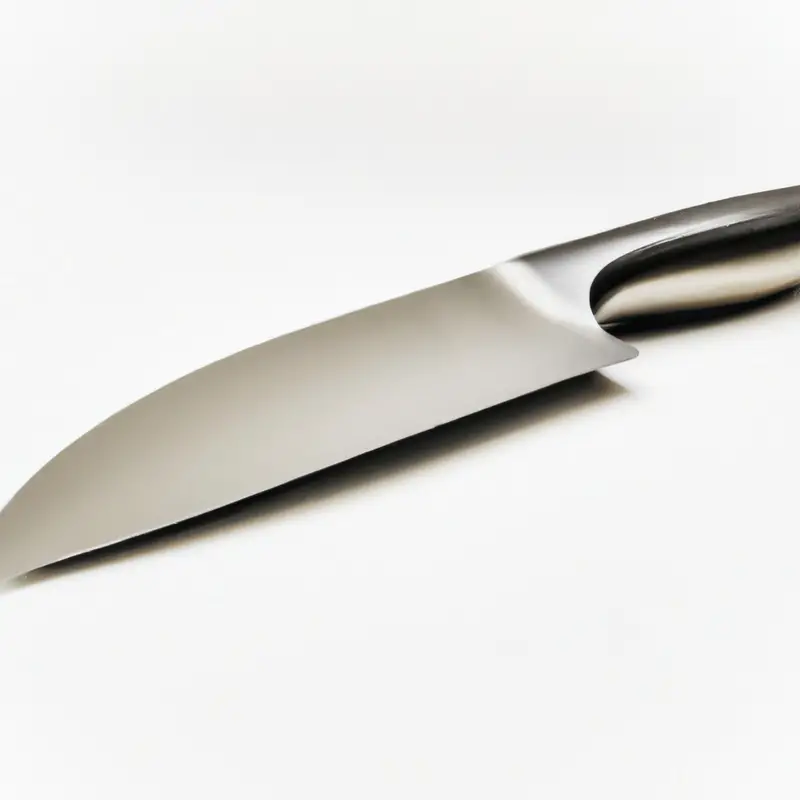
How to Sharpen a Santoku Knife with a Sharpening Stone
To sharpen a Santoku knife with a sharpening stone, follow these steps:
- Choose the right sharpening stone: There are different types of sharpening stones available in the market. In general, a water or diamond stone is recommended for sharpening Santoku knives.
- Use the correct angle: Hold the knife at an angle of 15-20 degrees to the stone. Make sure to keep the blade at the same angle throughout the process.
- Lubricate the stone: Apply a few drops of water or oil to the sharpening stone before sharpening the blade.
- Start sharpening: Begin by sharpening the blade on one side. Start at the heel of the blade and move towards the tip while maintaining the angle. Repeat the process on the other side.
- Switch to the finer grit: Once you have sharpened both sides of the blade, switch to a finer grit stone and repeat the process.
- Test the sharpness: After sharpening, test the sharpness of your Santoku knife by slicing through a piece of paper or a tomato.
- Rinse and dry: Clean the knife with a damp cloth to remove any metal shavings, then dry it thoroughly before using or storing it.
Sharpening a Santoku knife with a sharpening stone can be a bit challenging at first, but with practice, you can sharpen your knife like a pro.
Troubleshooting Dullness: How to Address Common Issues with Your Santoku Blade
If your Santoku knife is not performing at its best, it may be dull. Dullness is a common issue that can arise due to various reasons, such as improper usage or storage, or regular wear and tear.
Here are some troubleshooting tips to address dullness in your Santoku blade:
- Test the blade: First, determine if the blade is indeed dull. Hold a piece of paper with one hand and slice it with the knife. If the knife can cut through the paper effortlessly, it is sharp. If not, it needs sharpening.
- Sharpening: Sharpening is the process of removing the dull edges to achieve a sharp blade. You can use a sharpening stone or an electric sharpener. Follow the instructions carefully, and don’t over-sharpen the blade, as it can shorten its lifespan.
- Honing: Honing does not sharpen the blade but rather realigns the edges, maintaining the sharpness for longer. Use a honing rod to straighten the blade’s edges after every use.
- Storage: Improper storage can lead to dullness. Always store the knife in a sheath, a knife block, or a magnetic strip, away from other utensils that can damage the blade.
Conclusion: Troubleshooting dullness in a Santoku knife isn’t difficult with the right techniques, equipment, and care. Regular sharpening, honing, and proper storage can help maintain the blade’s sharpness and prolong its lifespan.
Final Verdict
Maintaining the sharpness of your Santoku knife is crucial to achieving efficient and precise slicing and chopping. By understanding the anatomy of the blade, knowing how often to sharpen your knife, and using the proper techniques for maintenance and storage, you can ensure your knife performs at its best for years to come.
Remember, a sharp knife is not only safer but also more enjoyable to use.
Whether you choose a manual or electric sharpener, honing rod, or sharpening stone, the key is to maintain consistency and practice good habits. By implementing the tips and tricks in this article, you can take your Santoku knife to the next level and elevate your culinary game.

